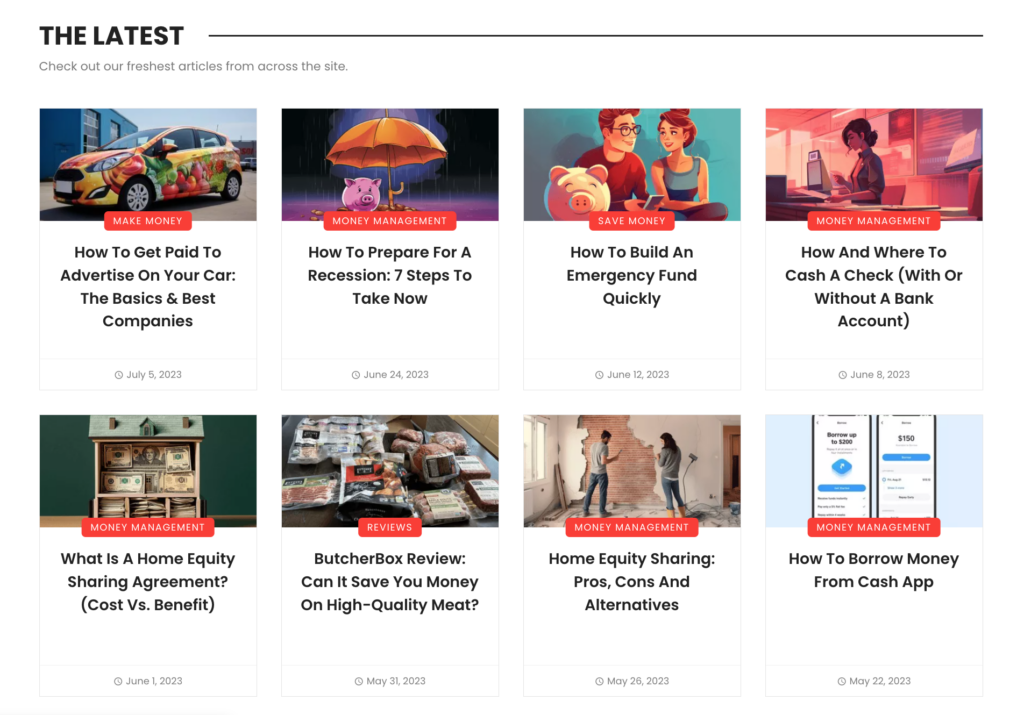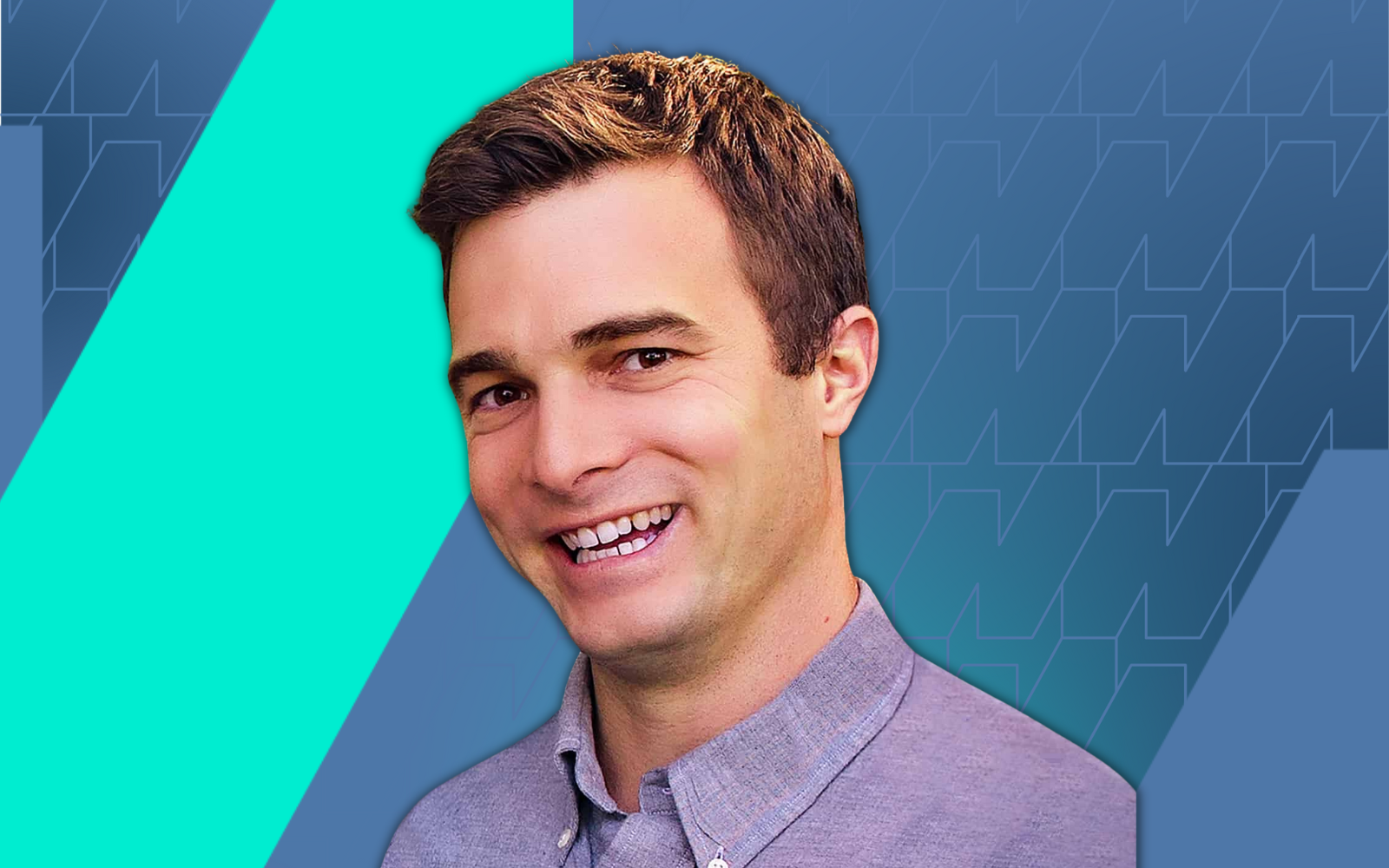How This 38-Year-Old Earns $40k/Month Using SEO to Drive Traffic to His Financial Advice Site
R.J. Weiss has been exploring side hustles for years, dabbling in niche websites, freelancing, and paid marketing, among other areas. His interest in earning money beyond a traditional job led him to create a website on the side: The Ways to Wealth.
Drawing on his extensive experience in the financial services sector, R.J. created his niche site and dreamed of earning an extra $1000 per month. Although his path was filled with highs and lows, through a combination of hard work, persistence, and the right strategies, his site is now bringing in $40k per month.
Keep reading to find out:
- Why he created his website
- What his website focused on initially
- How he got traffic in the beginning
- Where his income comes from
- What happened after the Google November 2019 update
- His main marketing strategies
- His approach to keyword research
- His thoughts on link building
- How he creates content
- How he grows his email list
- His favorite resources and tools
- His biggest challenge
- His greatest accomplishment
- The main mistake he’s made
- His advice for other entrepreneurs
Meet R.J. Weiss
I’m R.J., a financial professional living outside Chicago with my wife and three young children, ages 4,7, and 10.
After college, I joined a family-run financial services business and gained a decade of industry experience in various roles.
I earned the Certified Financial Planner (CFP®) designation during this period and started working with clients one-on-one.
Despite my career in the broader financial sector, I’ve always harbored a special passion for personal finance.
Why He Created His Website
I started The Ways To Wealth in 2016. My second child was born at that time, and money was tight. My dad was considering selling the family business since he was getting close to retirement. I could have taken it over, but I didn’t want to deal with the debt. Something told me to try something new.
When I launched the site, I didn’t think that The Ways To Wealth would be the primary source of income for my family. I got the idea from Pat Flynn’s income reports and wanted to try a niche website. Making $1,000 per month would have exceeded my expectations.
Ironically, I was also listening to the Niche Pursuits podcast during my commute. I was interested in what Spencer was doing with his Amazon FBA business, so I started an e-commerce business with a partner. It was barely profitable and I closed it down at the start of the pandemic.
The first idea for The Ways To Wealth was to review books and make different best-of lists (e.g., best business books, best investing books, etc). I got decent traffic, but Amazon’s affiliate program doesn’t pay enough for books alone.
During this time, I saw how other bloggers got incredible traffic from Pinterest. So I started using Pinterest too, and it worked great.
I also went to a conference for financial bloggers called Fincon. There, I heard about The Penny Hoarder’s use of paid traffic to make money from affiliate offers.
Utilizing Pinterest and Facebook, by the end of 2017, I was averaging about $3,000 a month. This was enough of a base to where I felt it made sense to at least try and go full-time.
I knew a bit about SEO from working on digital marketing for my family’s business. I knew that SEO could bring in traffic in the long run, so I was building up that source of traffic as well, which takes significant time.
Fast forward to 2023, and SEO is where The Ways To Wealth makes the vast majority of its revenue (with affiliate offers and advertising, with Mediavine being the main revenue drivers).
How Much He’s Earning
My site generates over $40,000 in monthly revenue. However, it’s important to remember that this isn’t purely an SEO site. We also invest in paid traffic, so our profit margins aren’t as high as a site relying purely on organic traffic.
The main income streams are affiliate marketing and ads. Affiliate partnerships account for approximately 60{57b8cc37fd24bce1cf64c8b05d9407ce9171516056c1f5e762677747187a0de4} of our revenue, with advertising revenue from Mediavine making up 40{57b8cc37fd24bce1cf64c8b05d9407ce9171516056c1f5e762677747187a0de4}.
The journey to this level of income has seen some highs and lows.
Initially, my site had a promising start. In 2019, we were attracting more than 10,000 visits a day from SEO at our peak.
However, the November 2019 Google update significantly impacted us. Honestly, it was warranted. Our content quality at the time wasn’t up to par.
This led to an income slump in 2020 and 2021.
I went all-in during this time, doing everything I could to make the site worthy of getting SEO traffic.
We focused on link building, site architecture, and topical authority. But just as importantly, we went through the site’s entire content catalog and rigorously reviewed and edited every article to ensure that they provided real value for our readers. It was a resource-intensive process, but it paid off.
In the second half of 2021, the site started to recover. And it was good timing, as I had started to dip into savings to pay for living expenses. I was likely a few months away from having to get some freelancing clients or a more traditional job.
With the recovery—or growth, depending on how you want to look at it—2022 was our best year yet, with profits up 3x over 2021.
Total traffic to the site from all sources in 2022 was over 4 million sessions. The total from organic search was over 1.8 million sessions.
R.J.’s Top Marketing Strategies
The Ways To Wealth’s top strategy is creating excellent content.
I know that’s not super exciting, but I’ve always believed that Google judges your site based on its overall quality. Therefore, I aim to ensure that every page delivers value and deserves to rank first in search results.
In other words, a site is only as good as its weakest page.
This approach has kept us from experiencing significant hits from Google updates since 2019. There has been a lot of shifting in the search engine rankings during this time, but we’ve managed to stay stable, or even gain, from each core update.
I still play an active role in the content process. Our managing editor has a journalism background, so he views everything through a critical lens as well. We’ve had a core team of writers who have been with us for a while; they know that we have high expectations (and they consistently deliver).

While we’re not the fastest at producing content because of this approach, I believe it’s helped us maintain rankings over time.
The Importance of SEO
SEO is very important for my business. It generates about 80{57b8cc37fd24bce1cf64c8b05d9407ce9171516056c1f5e762677747187a0de4} of the revenue on the site. In other words, SEO pays the bills for the company, and me personally.
I’m glad I focused on SEO from early on. It’s been a game-changer for The Ways To Wealth and is a fundamental part of our strategy going forward.
Keyword Research
Our keyword research process involves various methods, but we still heavily rely on data from Ahrefs. We put a lot of emphasis on developing certain areas or topics. We often ask ourselves, “If Google is to see us as an authority on topic X, what core topics do we need to cover?”
A strategy I’ve found helpful is the Profit First Method, which I highly recommend. It promotes prioritizing profit and helps keep finances in check.
Sometimes, no exact keyword matches what we need to write about, but the overall concept gets a lot of search traffic when you combine all the long-tail searches. Overall, we find ourselves focusing more on topics rather than specific keywords.
So, for instance, if we have a list of the best product testing sites (a high volume keyword), Google expects us to have in-depth reviews of many of those product testing sites we mention. These reviews should be based on first-hand experience as well.
Link Building
In the end, a lot comes down to links. Creating high-quality content can only take you so far.
As the amount of online content continues to grow, the importance of links is likely to increase, so link building is very important.
My current strategies involve connecting with journalists, using HARO (Help a Reporter Out), and participating in Facebook groups where reporters seek expert opinions. A professional credential attached to my name helps in these interactions, so I leverage that as much as possible.
However, I admit that I need to improve in this area.
Like many website owners, I enjoy creating content but am less enthusiastic about the outreach aspect of link building. This has somewhat limited the site’s growth, and I plan to focus more on it in the future.
R.J.’s Content Creation Process
Our content creation process starts with my editor and me creating a comprehensive outline for the writer. We use MarketMuse to guide us on what the content should include, but we don’t rely on it too much.
After all, we’re aiming to create content that’s different from what’s already in the search results. If our content is the same as what’s already out there, Google doesn’t have a strong reason to rank it.
We give our writers plenty of time to create their content. We don’t set strict deadlines because we want our content, especially our product reviews, to be accurate. To assess a product properly, writers need sufficient time, even if it’s something seemingly simple like a survey site.
After the writers finish a draft, the editor reviews it, and then I add my comments. If necessary, we send it back to the writer for revisions.
All in all, we may not be the fastest at creating content, but we focus on quality and thoroughness, and that takes time. This approach might require more patience, but we believe it leads to better content in the long run.
His Email List
Maintaining and growing an email list has been our major focus this year. We’ve recently transitioned from SendFox to ConvertKit, a platform that provides us with more analytical insights to help grow our list.
One effective strategy for growing our email list has been using paid traffic. Instead of squeezing the maximum value from each click upfront, we adopt a longer-term strategy. We aim to convert these first-time visitors into recurring visitors by signing them up to our email list.
Now that we’ve switched platforms, I’m revamping our automated email campaigns and developing more lead magnets across the site. For instance, we offer a financial goal-setting workbook, which is available on several pages.
Ideally, I want to create more lead magnets that address specific problems for our visitors.
For example, one of my personal passions is travel hacking. I’m able to pay for multiple trips each year through reward points. And I recently just created a six-part series on travel hacking for beginners. So, up next is creating a lead magnet and autoresponder series that further dives into this topic.
How Much Time He Spends on His Site
I typically work on my business for around 4 to 6 hours daily, doing focused work with clear breaks in between.
My usual routine involves waking up at 5 am and working until about 7 am when my children wake up. After preparing their breakfast and getting them off to school, I return to work around 8 am and continue until about 11:30 am, when I head to the gym.
One of my favorite midday breaks is my CrossFit workout session. I’ve made some great friends at my local CrossFit gym, which adds a social element to my daily routine.
After the gym, I tend to have a slower pace in the middle of the day, enjoying time with my kids when they return from school.
Then, I return to work and wrap up by about 4 p.m. So, in terms of actual work hours per week, it averages between 20 to 30 hours.
R.J.’s Favorite Resources
I’m a big fan of podcasts for staying up-to-date with business and marketing trends. Some of my favorites include:
- Niche Pursuits: I’ve been listening to this since 2016. It’s been a great resource for insights into the industry, and it’s truly an honor to be featured here.
- Marketing School: This podcast is great for keeping up with the fast-paced changes in the marketing world.
- Authority Hacker: I’ve been a long-time listener and have purchased multiple courses from them.
- Content and Conversation with SiegeMedia: They host some of the best guests in the SEO world, making it an incredibly valuable resource for anyone interested in this field.
His Top 3 Tools
My go-to tools are:
Ahrefs: I use Ahrefs daily for keyword research, site audits, and tracking rankings.
Trello: Trello is an invaluable project management software. It’s user-friendly and versatile, perfect for coordinating tasks between myself and the managing editor for the site. Whether it’s content creation or site updates, everything is organized in Trello.
Spreadsheets: I religiously track our performance using spreadsheets. With over a hundred partners, monitoring revenue daily is important to understand how the site is performing. This regular analysis helps us spot trends and opportunities and address any issues.
His Biggest Challenge
The biggest challenge I’ve faced while growing the business has been managing cash flow.
The nature of the business can make income quite unstable, which can be tough to navigate.
A strategy I’ve found helpful is the Profit First Method, which I highly recommend. It promotes prioritizing profit and helps keep finances in check.
However, it’s not perfect by any means for me. I’m always tinkering with the ideal system that allows for what’s just right based on the unique characteristics of my business. It’s improving, but I still have a long way to go.
His Most Important Accomplishment
One accomplishment I’m proud of is bouncing back after the seismic November 2019 Google update.
With the pandemic hitting in early 2020, my personal and professional life underwent a huge transformation. We suddenly found ourselves homeschooling two kids with a newborn in the house, all while my business was experiencing serious turbulence.
It was not easy, but I doubled down on my efforts and stayed committed to the site’s growth. I’m deeply grateful that this hard work paid off. This resilience during a tough period is a major achievement in my journey as an entrepreneur.
What He Wishes He Knew When He Started
When I started, I focused too much on affiliates rather than on truly providing value. I had a short-term perspective when it came to content creation, which is something I wish I had done differently. The hard truth hit me like a ton of bricks, and I learned my lesson the tough way.
If I could share advice with my younger self, it would be to prioritize value over short-term gains. Delivering useful, quality content is what attracts and retains loyal readers.
Trust me, it’s a lesson you’d rather not learn the hard way.
R.J.’s Biggest Mistake
My biggest mistake was not hiring a top-notch editor sooner.
Honestly, when I started, I had no idea how a professional content team operated. My approach was simple and flawed: get content from writers, scan it for grammar mistakes, and hit “publish.” This approach lacked strategic direction and a cohesive content plan.
An editor doesn’t just proofread; they can guide the overall content strategy and ensure the material aligns with your core values.
Understanding this earlier would have saved me from many headaches and improved the quality of my content significantly.
His Advice for Other Entrepreneurs
If you’re just starting to build something, don’t expect everything to go as planned. Try out a lot of different approaches and see what sticks.
We learn best from hands-on experience. Once you gain that experience, don’t become complacent. Keep refining your strategies, your methods, and your business model.
Adaptability is key in business. Mistakes and setbacks are part of the journey, so don’t be discouraged by them. Instead, see them as opportunities for growth and learning.



